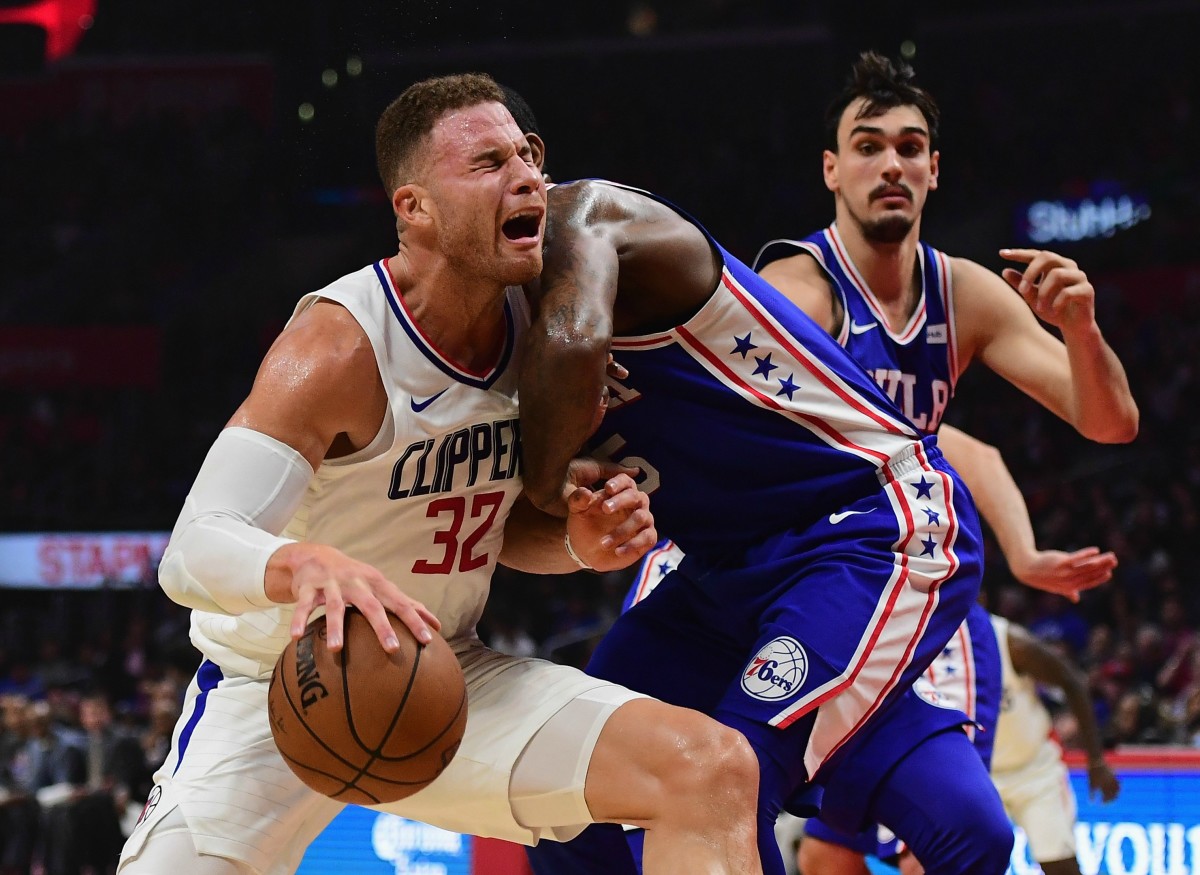Blake Griffin and the Clippers Are Not Built to Survive Injury

The Los Angeles Clippers go as Blake Griffin goes, and these days Griffin is overwhelmed. That’s what happens when a star’s support structure is whittled away, bit by bit. Losing Chris Paul in the offseason demanded comprehensive adjustment, but the kind that the Clippers—who started the season 4–0—seemed theoretically capable of making. Then they lost Miloš Teodosić indefinitely to a plantar fascia injury, sapping the starting lineup of playmaking. Danilo Gallinari followed due to a left glute injury, denying the Clippers a dynamic scorer. Starting point guard Patrick Beverley then missed five games with right knee soreness, stripping the Clips down to a skeleton crew.
The attrition of those injuries has been devastating. There’s enough variety to Griffin’s game to survive a significant absence—maybe even two. This is hardly the first time we’ve seen him make do with the likes of Wesley Johnson and Austin Rivers. Yet this run of injuries has collapsed what—even under the best of circumstances—looked to be a delicate ecosystem. Scan the roster and you’ll find players new to the league, new to the Clippers, or new to their role. Any team that reorients itself so dramatically will be forced to reckon with the unexplored.
The Clippers Are All-In On Blake Griffin
Those depths have not been kind to the Clippers thus far. Beverley returned on Monday night just in time to participate in a loss to the Knicks—the team’s ninth straight. Afterward, he fumed. “We too cool,” Beverley said, per the Los Angeles Times. “We too cool. We come in this game, we come on the court like people are supposed to back down because of the name on the back of our jerseys and that’s not the case. The only thing people are looking at is the name on the front of our jersey, and that’s nine losses in a row. They don’t give a ... about what you’ve done in the past or your stats or anything. Teams out here are trying to beat our ... and they are beating our ... .”
Beverley’s complaints are well-founded. It’s been impossible to watch the Clippers in recent weeks without constant reminder of their injury situation. Sindarius Thornwell, the 48th pick in the 2017 draft, does not become a starter by choice. Yet those glaring lineup problems have obscured other recurring themes. This still is a flighty defense, given to drifting focus and uneven effort. The offense can easily bog down, even when the Clippers have their best possible lineups on the floor. Griffin is an incredible talent. DeAndre Jordan can help carry a winning team. But on a fundamental level, the Clippers do tend to play things a bit “too cool” at times. Los Angeles found palpable relief in no longer having to deal with Paul’s hall monitor leadership style. Some teams, however, need a kick in the ass more than they know.

Realistically, it’s too early to trace what we’ve seen from the Clippers to any causal root beyond injury. There are concerning habits, to be sure, but there is also the wearing down of an artificially shallow roster to consider. As it stands, the Clippers are one of the worst fourth-quarter teams in the league. No player’s minutes load has been especially burdensome, though they may feel that way considering how many players are working against the grain of their individual games. Take Griffin, who has been assisted on just 19.5% of his two-pointers this season—less than half of last year’s assisted portion. Even a third of his three-pointers have come off the dribble. Expanding his game beyond the three-point line has opened up Griffin’s game, and yet his improved shot profile has yielded the worst effective field goal percentage of his career. The game has become more difficult for him.
Rivers is concurrently overstretched. Jordan, who led the league in field goal percentage for five straight seasons, has receded to the pack while posting his highest turnover rate in seven years. And overmatched as players like Johnson and Thornwell might seem, the deep reserves pulled into active duty by cinching the rotation are even more so.
The Clippers are losing because they’ve been a bad halfcourt offense that neither runs nor defends enough to compensate. There is hope that some of the more concerning factors involved could normalize along with the depth chart; in Beverley’s 334 minutes on the court this season, for example, the Clippers have outscored their opponents by 4.5 points per 100 possessions. Most of that difference has come on offense, where there is incredible value in having functional ball handlers around to keep certain tasks out of Griffin’s hands. Every able body eases the dynamic.
Even that, however, cannot be taken for granted. The makeup of this team makes it very difficult for the Clippers to survive injury. Few of L.A.’s reserves are equipped to assume much responsibility at all beyond their finite roles. Rivers doesn’t have the game of a spot starter. Lou Williams and Willie Reed are who they are. What depth there is on the roster is undermined by its lack of elasticity. That could be an all-too-relevant problem for the Clippers this season, given how much they rely on Griffin, Gallinari, and Beverley—none of whom has played 75+ games in a season since 2014. There is a capable team buried somewhere in here. How much we see of it seems unfortunately subject to aches, sprains, and strains above all else.
